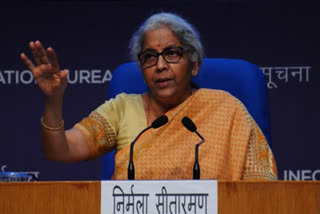New Delhi: Finance Minister Nirmala Sitharaman is expected to present the Union Budget for the next financial year (April-March 2023 period), on February 1 when the Parliament will meet for the first session of this year, also known as the budget session.
For the current financial year, the total expenditure of the Union government was estimated at Rs 34.83 lakh crore. The budget proposals for spending such a massive amount of money are presented to the Parliament in form of demands for grants as mandated by the Constitution of India.
Article 113 of the Constitution mandates that the estimates of expenditure from the Consolidated Fund of India, which are included in the Annual Financial Statement or Union Budget, and which are required to be voted by the Lok Sabha, will be submitted in the form of demands for grants.
These demands for grants are presented to the Lok Sabha along with the Annual Financial Statement. As a general rule, one demand for grant is presented for each ministry or department such as the department of space or department of atomic energy or the ministry of culture and tourism.
However, for large ministries, more than one demand for grants can also be presented depending on the nature of expenditure. For example, Budget 2021-22 contains 101 demands for grants.
The Union government also approves the budget of union territories without legislatures such as Chandigarh, Andaman and Nicobar Islands and Lakshadweep. In such cases, a separate demand for grant is presented for each union territory without legislature.
Union territories with legislature such as Delhi and Puducherry pass their own budget independent of the Central government.
